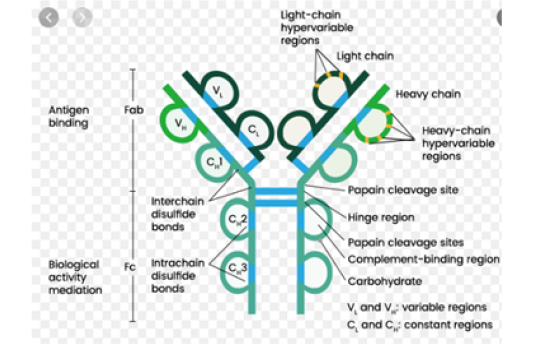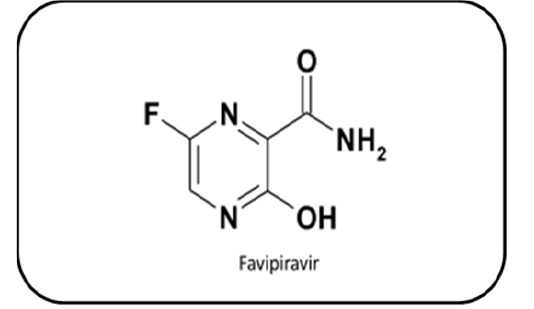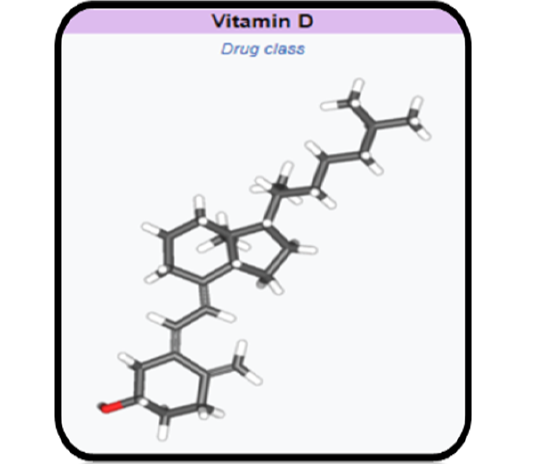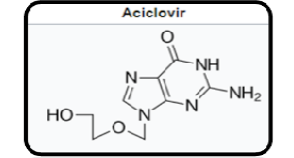Advances in Animal and Veterinary Sciences
Mini Review
Are Favipiravir and Acyclovir with IgG Injections Supplemented with Vitamin D “Suggested Therapeutic Option” Can Fight Against COVID-19?
Reham Z. Hamza1,2*, Tarek Al-Talhi4 , Adil A.Gobouri4, Walaa F. Alsanie5, Samy M.El-Megharbel3,4
1Biology Department, College of Sciences, Taif University, P.O. Box 11099, Taif 21944, Saudi Arabia; 2Zoology Department, Faculty of Science, Zagazig University, Zagazig 44519 , Egypt; 3Chemistry Department , Faculty of Science, Zagazig University, Zagazig 44519, Egypt; 4Chemistry Department, Faculty of Science, Taif University, P.O. Box 11099, Taif 21944, Saudi Arabia; 5Department of Clinical Laboratories Science, Faculty of Applied Medical Sciences, Taif University, P.O. Box 11099, Taif 21944, Saudi Arabia.
Abstract | Fighting silent killer viruses like SARS-CoV2 is still a real challenge and the recent ability to predict whether human will fight a pandemic remains real challenge, but it is an urgent need to therapeutic strategy due to the appearance of novel deleterious influenza strains to cope with pandemics. The early diagnosis of these killing viruses are considered as very important steps in treatment and alleviating the severe symptoms of SARS-CoV2 viruses. Severe infections may be the cause of death especially due to liver , heart , renal and respiratory failure and in mean times encephalitis due to the severe fever in some cases of COVID-19 and failure of body organ to combat this SARS-CoV2 viral attack and so, we think that vitamin combination with the therapeutic protocol will be of very importance in saving organ vitality. The suggested protocol include treatment with potent anti-viral drugs combination (Favipiravir and acyclovir) which will display on inhibiting of viral RNA and can stop the uncontrolled replication of the virus and then using some potent immunostimulator and immunoprotectant factors like IgG and vitamin.D to provide the body either with ready immunoglobulins or elevate tight junctions of the tissues and improve vitality of the body. So we suggest this therapeutic option that we think it will achieve potent results and clinical trials are recommended to evaluate the efficacy of these drugs combination and their efficacy against COVID-19.
Keywords | SARS-CoV2, Favipiravir, Acyclovir, IgG, Vitamin D, Viral infection, COVID-19.
Received | October 14, 2020; Accepted | December 12, 2020; Published | February 20, 2021
*Correspondence | Reham Z Hamza, T. Altalhi, Biology Department, College of Sciences, Taif University, P.O. Box 11099, Taif 21944, Saudi Arabia, Chemistry Department , College of Sciences , Taif University , P.O.Box 11099 , Taif 21944 , Saudi Arabia; Email: dr_reham_z@yahoo.com, tmmba@windowslive.com
Citation | Hamza RZ, Al-Talhi T, Gobouri AA, Alsanie WF, El-Megharbel SM (2021). Are favipiravir and acyclovir with igG injections supplemented with vitamin d “suggested therapeutic option” can fight against covid-19?. Adv. Anim. Vet. Sci. 9(4): 549-554.
DOI | http://dx.doi.org/10.17582/journal.aavs/2021/9.4.549.554
ISSN (Online) | 2307-8316; ISSN (Print) | 2309-3331
Copyright © 2021 Hamza et al. This is an open access article distributed under the Creative Commons Attribution License, which permits unrestricted use, distribution, and reproduction in any medium, provided the original work is properly cited.
INTRODUCTION
Coronavirus (SARS-CoV2) is the main inducer of COVID-19 disease, this is an emerging disease and it was announced firstly by WHO as pandemic in March 2020. COVID-19 symptoms include severe fever, sore throat and in some cases (RDS) (Respiratory Distress syndrome) and severe pneumonia, This virus is considered a member of β-coronavirus and may infect peoples with different ages (Salman and Salem, 2020).
It is well known that tolerance to self is a device that actually remain intact for normal growth and existence. So when something happens to destroy the self-tolerance integrity , suddenly the immune response and autoimmunity may develop.
All viruses including SARS-CoV2 are obligatory intracellular pathogens and have highly mechanisms for cellular invasion, replication and thus evasion of the immune system.
Host defenses against viral infections aim to first slow viral replication and then to eradicate infection. The antiviral response can be complex with several factors affecting the outcome of the host pathogen interaction such as the route of entry and site of attachments. Thus different types of antibodies may be necessary for the control of specific types of viral infections.
Considering the case of COVID-19 infection , it is obviously that it infect the respiratory tract epithelium which leads to the uncontrolled replication of the virus in the epithelial cells and then spread to the adjacent epithelial cells.
An effective antibody response is usually not sufficient to eliminate a viral infection , particularly when the virus has established itself in the host cells.
So, our suggestion treatment based on a case of the passive immunization which refers to the administration of antibodies and immunoglobulin’s or lymphocytes which then provide a protection in the recipient host and this case mimic the natural passive immunization that takes place by transferring of the antibodies from the mother to the infants in placental circulation, thus the artificial antibody therapy will depend on administration of the immune human globulin.
Passive immunization can be the right key for treatment than active immunization in that it doesn’t rely on the ability of the host’s immune system to make appropriate response , Hence passive immunization with IgG injections results in the immediate availability of antibodies that can mediate protection against pathogens.
Immunoglobulin– G (Igg)
Immunoglobulin-G (IgG) (Figure 1) representing about 75% of the humans antibodies in serum, IgG is the most common immunoglobulin found in the human blood. IgG is released by plasma B cells (Vidarsson et al., 2014).

Figure 1: Antibody structure
IgG is the main type that allowing to control infection of different body tissues and have the ability to bind with many kinds of viruses and bacteria. So, IgG really protects the human body from different severe infections.
IgG does this potent action by the following mechanisms (Mallery et al., 2010): IgG-interposed binding with various pathogens like viruses causing their immobilization through the process called agglutination; IgG firstly coating the surface of the pathogens that allow the viruses recognition and then viral ingestion by phagocytic immune cells which leading to the elimination of the pathogen eventually by itself which is considered an important mechanism in fighting COVID-19 pandemic.
IgG antibodies are generated after the maturation of immune antibody response, thus they mainly participating in the 2ry immune response which is important in case of COVID-19 (Mallery et al., 2010).
IgG is “Isotype” which is the only antibody as this type, that has cellular receptors to facilitate IgG passage through the human tissues and thus providing the great protection to the infectious persons.
Since many pathogens must attach to specific host receptors to cause infection. Immune response that block the ligand receptor interaction may be protective, we think that IGg injection will be as a vaccine that can block access of SARS-CoV2 to the cellular receptors in patients.
The administration of specific antibody preparations were one of the effective antimicrobial therapies and could be used for passive antibody therapy and treatment for various infections as a serum therapy.
Recently, some antibodies made in the laboratory have been used for treatment of infectious diseases and this is area of great research activity which will be likely may be developed in the future.
The use of immunoglobulin from human serum began early in 1916 by administration of serum obtained from individuals who had recovered from infection with measles virus and thus we believe in good results of serum therapy even for severe cases or elderly.
IgG intravenous injections is usually used to strengthen and duplicates (immune system) “The natural defense system of the body” to lower the infection risk in persons with a weakened immune system. This IgG medication is essentially made from the healthy human blood that has a high level of defensive substances (antibodies) concentrations, which help to fight infections (Vidarsson et al., 2014).
IgG is also used to elevate the “platelets” in persons with a certain infections . Platelets are needed urgently in COVID-19 cases to stop bleeding and forming of blood clots, this is important issue in COVID-19 severe infections that may cause several clots to the persons’ lungs and thus may cause sudden death so , IgG will be of high benefit to protects these persons from blood clots and deteriorated of their health conditions (Vidarsson et al., 2014).
IgG medication is given by injection under the skin or slowly into a veins which is the best way as directed by the health care members. If the patients have few or no side effects, the medication will be given faster. The dosage will depend on the patients’ medical condition, weight and their response to treatment (Mallery et al.,2010).
FAVIPIRAVIR AND ACYCLOVIR COMBINATION
Favipiravir
Favipiravir is considered as a potent anti-influenza drug (Figure 2). Favipiravir potent functions are represented by its role as a terminator agent at the site of combination of the cell with virus RNA and thus decline the viral load. Favipiravir succeeded greatly in curing all the mice infected with a lethal influenza experimental infection model (Kimiyasu and Tohru, 2020).

Figure 2: Trade name : Avigan drug
So, favipiravir help in curing animals with lethal infection. Beside it’s broad spectrum anti-RNA viral activities both invivo in animal models with the presence of lethal RNA viruses like Ebola virus and in vitro. The best feature of favipiravir drug is the lack of resistance generation to the viruses which make it potent antiviral drug (Kimiyasu and Tohru, 2020).
Kimiyasu and Tohru (2020) reported that they investigated the cytokine series in infected animals influenza virus in their laboratory, they concluded that favipiravir was very effective in the cell culture experiments, and its high effectiveness in animals must be confirmed. It is observed that favipiravir oral administration was markedly effective in alleviating the influenza infection symptoms in mice.
Favipiravir has previously reported its efficacy against Ebola virus infection, the efficacy of favipiravir against Ebola virus was shown in a mouse model (Smither et al., 2014) and a therapeutic animal model of Ebola virus (Oestereich et al., 2016). Treatment with favipiravir for about 13 days after the induction of the lethal infection with Ebola virus, All mice were cured when the treatment was started after the virus detection in blood.
The dose of favipiravir that was used in treatment of human with Ebola virus “6000 mg/day” on the 1st day and “2400 mg/day” on the 9 day (Jacobs et al., 2015).
Favipiravir has been evolved as an anti-influenza drug against the severe infections and severe symptoms. Favipiravir has a high similarity mechanism of action with anti-herpes-virus drug as acyclovir (Kimiyasu and Tohru, 2020).
Favipiravir was previously used to treat some human lethal infections because its efficacy has been confirmed in a wide range of experimental animal models with severe lethal RNA infections., Favipiravir has been used for urgent and life-saving purposes in patients with severe infections because there is no standard effective treatment, to show its efficacy (Kimiyasu and Tohru, 2020).
The prediction whether a pandemic will be eventually come to end remains a real challenging issue, but a necessary potent therapeutic strategy appears to be: available vaccines and drugs for treatment of influenza especially for the novel strains of influenza to deal with the pandemics.
The specific features of favipiravir is that it does not produce resistant viruses among anti-influenza drugs suggested that favipiravir is expected to play an important role among drugs that used in the treatment of a lethal influenza.
We suggest that this review will help the clinicians and the scientists considering suggested strategies for COVID-19 pandemic disease, such as the use of the anti-influenza drug favipiravir for possible treatment.
Guangdi and Erik (2020) reported that according to Agostini et al. (2018) and Manli et al. (2020). Favipiravir is approved for treatment of influenza in Japan and used as randomized trial for 2019-nCoV and its action depend mainly on RNA-dependent RNA polymerase (RdRp).
ACYCLOVIR
Trade name: Zovirax
Acyclovir is considered as the first antiviral strategy (Figure 3), and many subsequent antiviral drugs have been developed. Acyclovir is effective against herpes simplex virus and varicella virus, and effective target agent against infection caused by 1 or 2 viruses from the same family (Shiraki, 2018). One of the unique and important potent features of favipiravir drug (T-705) is: its broad spectrum activity toward viruses’ RNA, including influenza and respiratory viruses.

Figure 3: Acyclovir structure
Acyclovir, an acrylic purine nucleoside analog, is a highly potent inhibitor of herpes simplex virus (HSV), and varicella zoster virus, and the important potency of this drug is that it is extremely with very low toxicity for the host cells. Acyclovir monophosphate (acyclo-GMP) is subsequently converted to acyclovir triphosphate (acyclo-GTP) by cellular enzymes. Acyclo-GTP persists in HSV-infected cells for many hours after acyclovir is removed from the medium. Acyclo-GTP acts as a more potent inhibitor of the viral DNA polymerases than of the cellular polymerases (Elion,1982).
The most benefit of using acyclovir is that there is a potent synergistic effects between interferon and acyclovir .when administered (GlaxoSmithKline, 2003). acyclovir is poorly water- soluble and has poor oral bioavailability (15–30%), thus, it is recommended that (I.V) injections is necessary especially in COVID-19 as high concentrations will be required (Summary of Product Characteristics (SPC)., 2014).
VITAMIN D
Vitamin D (Vit D) is a fat-soluble secosteroids (Figure 4) which are soluble in fat and are responsible for increasing the intestinal absorption of Ca, Mg, and PO4, and other biological activities (Holick, 2004). In humans, the most important derivatives are vitamin D3 (Hewison, 2011).

Figure 4: Vitamin D structure
Generally, vit. D functions to activate the innate immunity (Beard et al., 2011), which is very important issue in combating COVID-19. Deficiency of vit.D has been correlated to the increased risk or viral infections severity ,that including HIV (Spector, 2011; Nnoaham and Clarke, 2008).
Vit. D low levels appear to be a risk factor for tuberculosis (Luong and Nguyen, 2011) and it was used as a treatment historically (Autier et al., 2017).
Supplementation with Vit.D slightly declines the risk of the respiratory tract infections and the exacerbation of asthma (Pakpoor and Ramagopalan, 2014). No clinical trials have been done to assess its effect on preventing other infections, such as malaria.
Although tentative data correlated with low levels of vit.D to asthma. Evidence and animal experiments need to carried to support the beneficial effects on asthma. vit.D and multiple sclerosis incidence have been linked, but it is not clear what the nature of any causal relationship might be (Grantm et al., 2020).
Vit.D low levels are associated with 2 forms of inflammatory diseases in human like the ulcerative colitis (Grantm et al., 2020). Further studies are required and needed to determine the significance of vit.D and its potential vital role.
(Grantm et al., 2020) found that vit.D success in reducing the viral epidemics risk in several ways. 1st, higher 25(OH) D concentrations reduce the chronic diseases risk, including the respiratory tract infections and cardiovascular disease.
Vit. D reduces the risk of respiratory infections by 3 mechanisms:
(1) Maintenance of the tight junctions.
(2) killing enveloped viruses by induction of defensing.
(3) Reducing the production of the pro-inflammatory cytokines by the innate immune system and thus reducing the cytokine storm risk which is the leading cause to pneumonia.
A lot of trials have reported that higher concentrations of vit.D is associated greatly with the reduced risk of herpes virus and human immunodeficiency virus , respiratory virus, pneumonia and influenza, (Del Pinto et al., 2015).
Vitamin D has many mechanisms by which it reduces risk of microbial infection and death. The role of vit.D in reducing the risk of the common cold grouped those mechanisms into three categories: physical barrier, cellular natural immunity, and adaptive immunity (Rondanelli et al., 2018).
Several articles discussed how viruses disturb junction integrity, increasing infection by the virus and other microorganisms (Rossi et al., 2020) .That action by viruses is an important reason why viral infections progress to pneumonia. So, we suggest using of combination of this potent antiviral drugs (Favipiravir and Acyclovir) will be of great benefit in inhibiting he viral replication of SARS-CoV2 to a potent extent that can enable the health care members to control on the elimination of this virus and can double the human power to fight the viral replication greatly.
So , the suggested protocol depend on:
1-Firstly: Trial to inhibit viral replication of SARS-CoV2 and controlling on the host cell instead of the virus and this by using two potent antiviral agents that recorded success in combating previous viruses with severe symptoms with low resistance in human cells.
2-Secondly: Elevate immune response by IgG and Vit.D to keep the vitality of the patient’s organ to be able to fight this virus.
ACKNOWLEDGMENTS
The author wish to thanks Deanship of Scientific research in Taif University for supporting researchers and scientific researches related to COVID-19.
AUTHORS CONTRIBUTION
All the authors have contributed in terms of technical knowledge in framing the article.
CONFLICT OF INTEREST
The authors have declared no conflict of interest.
REFEReNCES





